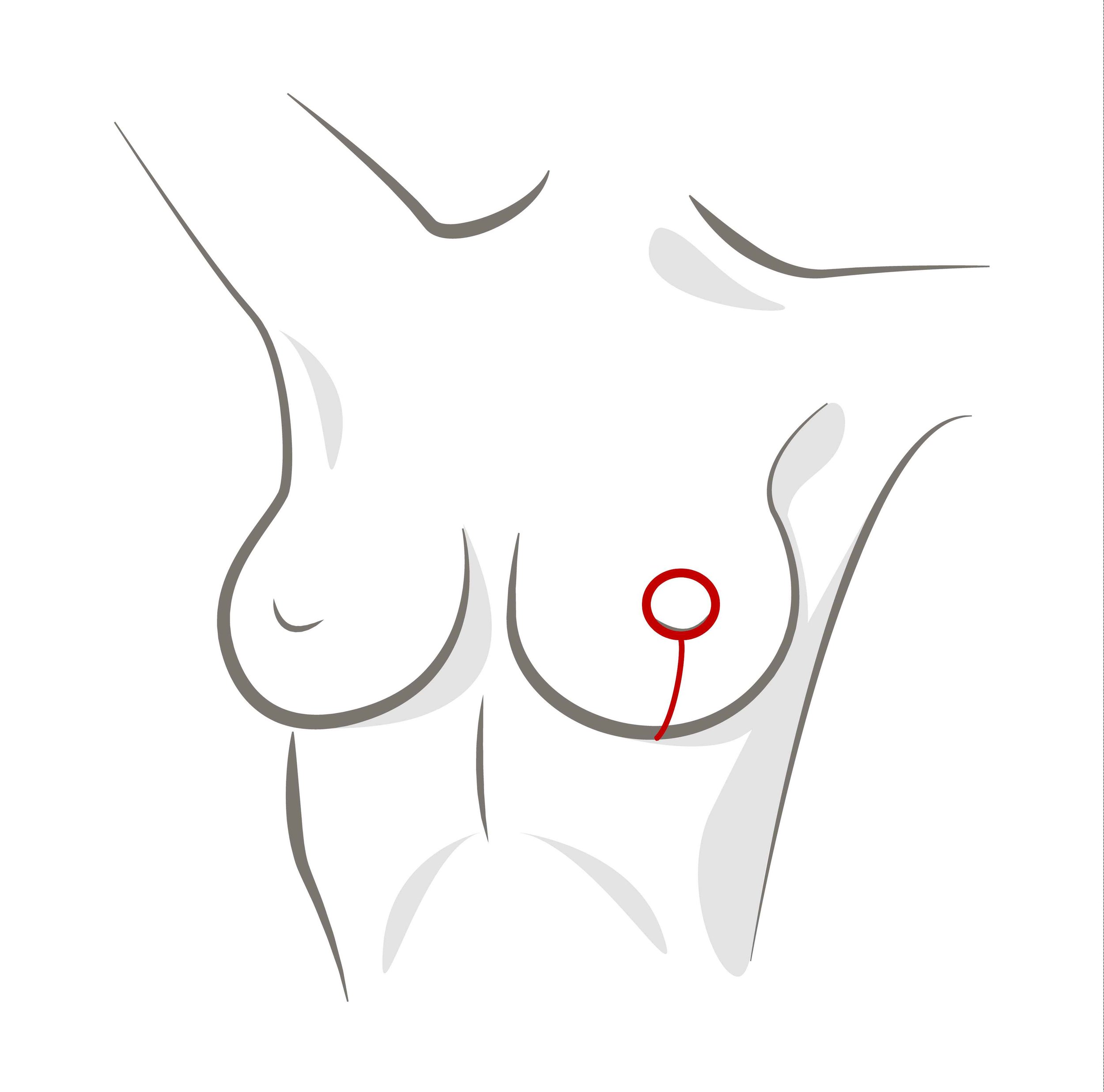
Breast Reduction
What is a Breast Reduction?
A breast reduction simultaneously removes excess fat, tissue and skin from your breasts to reduce breast volume and lift or reshape the breast. It can be performed for cosmetic reasons if you’re not content with the large volume of your breasts, as well as the overall shape and look of them. It can also be performed for medical reasons if you develop persistent symptoms due to the size of your breasts. These could include poor posture, neck pain, back pain, shoulder pain, limited ability to exercise or skin irritation. OHIP may cover a breast reduction if it is deemed medically necessary. However, Valespring does not perform OHIP-covered breast reductions at our facility. We do perform breast reductions for cosmetic reasons. Dr. Stephanie Dreckmann is a board-certified, highly talented plastic surgeon performing breast reductions in the Greater Toronto Area. At Valespring Cosmetic Surgery Institute, Dr. Dreckmann will assess your specific breast reduction needs and eligibility for surgery at our facility during a free consultation.
Why Get a Breast Reduction?
Boost self-confidence and self-esteem
Improve your breast-to-body proportions to complement your figure
Alleviate pain in the back, neck and shoulders
Improve breast shape and nipple orientation
Reduce areola size
Enjoy better fitting clothing
A Breast Reduction Surgery Overview
Procedure
An incision is made (see patterns below) to remove excess skin, fat and breast tissue. This reduces volume, raises and reshapes the breast. Drooping or sagging is improved and the internal breast tissues are also adjusted to create a rounder and fuller breast. Areolas can be reduced and nipples can be elevated at this time. After achieving the appropriate breast appearance, the incisions are stitched closed.
Liposuction can be added to the procedure to remove excess fat around the sides of the breasts and to provide enhanced breast contouring and shape.
A breast reduction usually takes 3 to 4 hours.
Anesthesia
General Anesthesia so that the patient is fully asleep for the procedure.
Recovery
1-2 weeks off work
4 weeks before heavy exercise
A complimentary surgical bra must be worn for 4 weeks
It can take up to 6 to 12 months for your breasts to achieve their final shape
These numbers serve as a rough guideline, but you should always follow your surgical team’s specific and individualized recovery plan, as recommendations may vary from patient to patient
Am I Candidate for Breast Reduction?
Valespring Cosmetic Surgery Institute follows all guidelines from the College of Physicians and Surgeons of Ontario to maximize patient safety, and Dr. Dreckmann will personally perform any necessary physical assessments during a consultation to evaluate your eligibility as a candidate. The following are a general set of requirements to be an eligible candidate for breast reduction surgery:
Generally fit and healthy
Body mass index (BMI) less than 35
You can calculate your BMI here
Smokers should quit smoking at least 4 weeks prior to surgery, as well as after
Not currently pregnant or breastfeeding
Realistic expectations
With a consultation at Valespring Cosmetic Surgery Institute, Dr. Dreckmann will help provide realistic expectations by aligning your desired breast size and shape with your age, lifestyle, physique and proportions so that you have a clear idea of what you can expect in your final result.
Valespring reserves the right to turn down patients who do not meet the necessary physical or psychological criteria for cosmetic surgery, and would do so only because we make your health and safety our top priority.
Breast Reduction Methods
Vertical Breast Incision (Lollipop incision)
A lollipop incision goes around the areola and extends from the bottom of the areola downward towards the breast crease. It is used for a moderate elevation of the nipple, reduction of the areola (if desired) and reducing excess skin in the horizontal direction. Since excess skin is not removed in the vertical direction, it is not a suitable incision if the breasts need to be raised a significant amount.
*Please note these photos are just a guideline and the shape, length and position of the scars may vary from patient to patient
Anchor Incision
The anchor incision is named after the shape of the incision. It involves an incision around the areola, from the bottom of the areola downward toward the breast crease, and then along the breast crease. It allows for removing skin in both the horizontal and vertical directions, and allows the breasts to be raised and reshaped significantly. The incision in the breast crease tends to be naturally hidden by the breast. This incision is the most common. For patients with significant excess skin on the sides of the chest, this horizontal scar sometimes needs to be extended more laterally than shown in the photo.
*Please note these photos are just a guideline and the shape, length and position of the scars may vary from patient to patient
Liposuction on the side of the breast
A breast reduction procedure is often paired with liposuction. It most commonly targets excess fat on the side of the breast and upper armpit region (also known as axillary rolls). Performing liposuction on these areas can improve the contour and definition of your breasts.
Breast Reduction Recovery
For a few days after surgery, you will likely experience some pain, discomfort, swelling and bruising in the breasts. Your doctor can provide medication to control the pain. Surgical drains are rarely needed. Strenuous activity should be avoided.
A complimentary surgical bra is provided immediately after surgery and must be worn day and night for 4 weeks. Stitches are often dissolvable and don’t require removal.
2-3 weeks after surgery, much of the pain, swelling and bruising should have subsided. Most women are able to return to work by this time. The results from a breast lift should be immediately noticeable, and it will take several months for their shape to settle. Scars will likely fade over time, and are placed in areas hidden by bras or bathing suits. It often takes 6-12 months to see the final result.
Your doctor will provide comprehensive post-operative instructions which will describe your customized recovery plan in more detail.

Let us guide you through the decision
Book a Free Breast Reduction Consultation Now!
How Much Does a Breast Reduction Cost?
Breast Reduction
$9000+
Cost Includes:
Breast reduction procedure on both breasts
Surgical Bra
Liposuction on the Side of the Breast
+$3000
Cost Includes:
Liposuction on both sides of the breasts when added to a breast reduction procedure.
Optional Overnight Stay
$4000
Patients normally return home on the same day of the procedure, but some would like the extra peace of mind of staying in an overnight bed in our medical facility, under the supervision of 2 attendants.
Cost Includes:
Overnight stay in one of our beds
Nurse supervision for the length of your stay
Meals for dinner and breakfast the following morning
Consultations are free with no obligation
If you have any questions about our pricing or have specific needs, do not hesitate to contact us
Prices serve as a guideline only. Fees will be adjusted based on each patient’s individual anatomy and the complexity of the case.
Prices do not include HST

Get your breast reduction now, make payments later!
FAQs about Breast Reduction
-
Breast reduction can be covered by OHIP if an application is submitted to OHIP and pre-approved, deeming the surgery medically necessary. Breast reductions for cosmesis are not covered by OHIP. Common symptoms that influence whether or not the surgery is necessary include:
Persistent pain in the neck, upper back and shoulders
Negatively impacting posture
Skin irritation or infections
OHIP will not cover techniques that involve liposuction, and will not cover associated cosmetic procedures, like implants or a breast lift.
-
All surgeries have risks, including a breast reduction, but breast reduction surgery is generally regarded as a safe procedure. Risks will be discussed during the consultation. The procedure will be performed by our board certified plastic surgeon, Dr. Dreckmann, in an accredited surgical facility. Patient safety is of utmost importance to us.
-
Most complications that might arise after a breast reduction are the same as those from any other surgical procedure. These include, but are not limited to:
Infection
Bleeding
Swelling and bruising
Damage to surrounding nerves, blood vessels and other parts of your body
Blood clots
In the case of a breast reduction, patients may experience short term or long term loss of feeling in the breast and nipples.
Dr. Dreckmann will provide a comprehensive list of risks and complications during the consultation, and will take all necessary precautions to mitigate the risks during surgery.
-
Breasts do not have to be a certain size for reduction surgery if being performed for cosmetic purposes. Patients themselves, however, must be under a certain weight to be candidates for surgery at our facility.
From OHIP’s perspective, a breast reduction will only be covered if deemed medically necessary. A certain volume should be removed at the time of surgery, otherwise the surgery is considered a breast lift as opposed to a reduction procedure. Breast lifts are not covered by OHIP.
-
Please see the description under the “Breast Reduction Recovery” section above.
-
Often 1-2 weeks off work is recommended. Every patient’s experience is different, and some patients are ready to go back after a couple days while others need weeks for recovery.
Walking and return to most daily activities is encouraged immediately. It can take 4-6 weeks before being able to perform strenuous activities like sports and weight lifting.
-
Most surgical scars are permanent, but fade over time. The degree of scarring tends to vary between patients, and can be influenced by many factors including ethnicity and genetics. Breast reduction scars are placed in areas that can usually be hidden by a bra or bathing suit.
-
Breasts do not have to be a certain size for reduction surgery if being performed for cosmetic purposes.
From OHIP’s perspective, a breast reduction will only be covered if deemed medically necessary. The way to determine if you are a candidate for a medically-necessary breast reduction is by having a consultation with a surgeon who performs that procedure. A certain volume should be removed at the time of surgery, otherwise the surgery is considered a breast lift as opposed to a reduction procedure. Breast lifts are not covered by OHIP.
-
Common symptoms that influence whether or not the surgery is medically necessary include:
Persistent pain in the neck, upper back and shoulders
Negatively impacting your posture
Limiting your ability to exercise
Skin irritation or rashes
Persistent, excessive pressure on your shoulders where your bra straps sit
-
During the procedure you will receive general anesthesia and you should not feel anything during that time.
Most pain and discomfort is experienced during the first few days after surgery, and your doctor can prescribe medication to help mitigate the pain.
Swelling, bruising and tenderness around incisions can last for 2-3 weeks.
-
It is often possible. With modern surgical techniques, it is usually possible to preserve the ability to breastfeed after a breast reduction. Some women are not able to breastfeed after a breast reduction or have decreased milk supply. It is often unclear, however, whether the prior surgery was the underlying cause.
-
Most breast reduction patients experience long-lasting results and do not require a revision surgery. However, factors like pregnancy, breastfeeding, weight gain, certain medications, aging, menopause and general hormonal changes can trigger breast regrowth.












